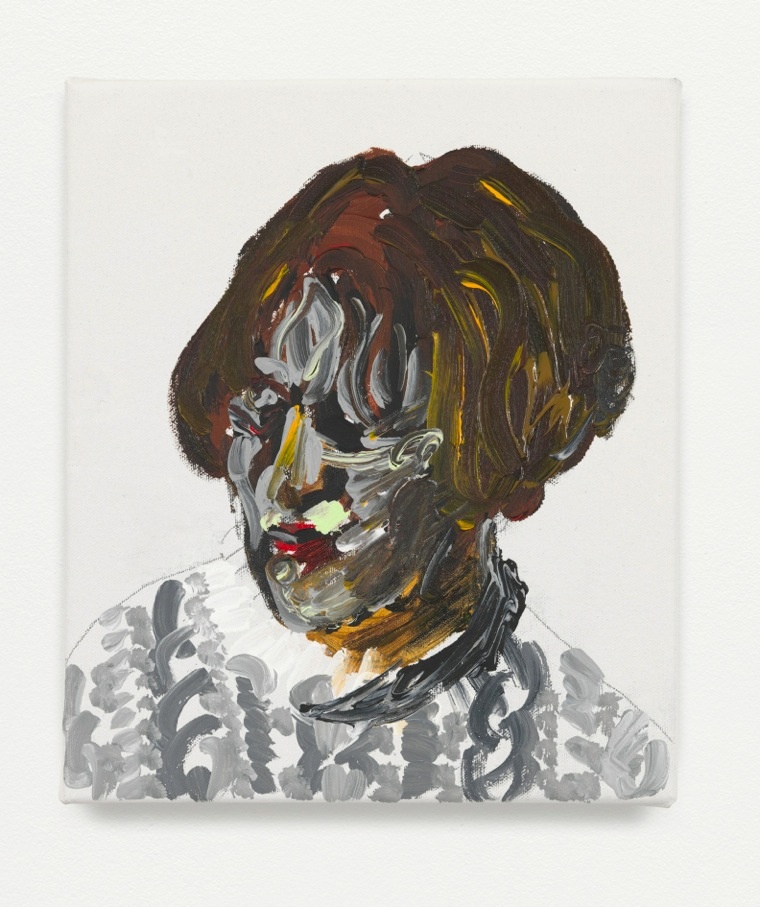Martin Creed

There is little of Creed’s comic dexterity in Work No. 2135 Portrait of a woman, a small painting of an unknown sitter, so unlike the quick-witted one-liners for which he is best known. “The bearable lightness of Martin Creed” – in critic Roberta Smith’s words – is all but absent here, his muddied palette betraying an undertone of anxiety. But then, dread is one of Creed’s few constants. “I always feel horrible, you know,” he says, speaking of his works as symptoms. “I try and do things because I find life is difficult and I want to make it better.” In his figurative works, this dread is most apparent; his paintings suffuse with worried brushstrokes. Where his installations allow for an impassive distance – arranging boxes in ascending order, opening and closing curtains – in acrylic, his anxiety is apparent. Perhaps this is among the reasons Creed abandoned painting after art school, returning to it only later and only sometimes, more often composing abstract images in brightly coloured pigment.
b.1968, Wakefield
To his eclectic and inconstant works, Martin Creed lends a taxonomy of numbers – each piece titled in the sequence of its making. With numbers, he assigns patterns and order to a disordered assortment of performances, installations, paintings, sculptures, texts, and songs. With numbers, he defers, leaving each work only the words necessary to describe it, allowing for ambiguity and autonomy in its reception. Of Creed's most notable are Work No. 88 A sheet of A4 paper crumpled into a ball (1994), Work No. 200 Half the air in a given space (1998), and Work No. 227 The lights going on and off (2000), though these are among his more conceptually distilled and restrained offerings. Regardless of each piece’s form or content – a composition for a choir and an elevator, a film of someone being sick, runners set racing through the gallery, a portrait of two dogs – the numbering system remains in place. “Words are work,” the artist writes in the text piece Work No. 470 If you’re lonely (2005):
Words are things, shapes. It’s hard to compose them, to put them in any kind of order. Words don’t add up. Numbers add up! Things are everywhere. Everything is something, everything has something, but not everyone has someone. It’s hard to distinguish between things, to separate things.
Creed’s numbering system began with Work No. 3 Yellow painting (1986), made during his time at art school; the artist hesitant to begin at the beginning with Work No. 1.